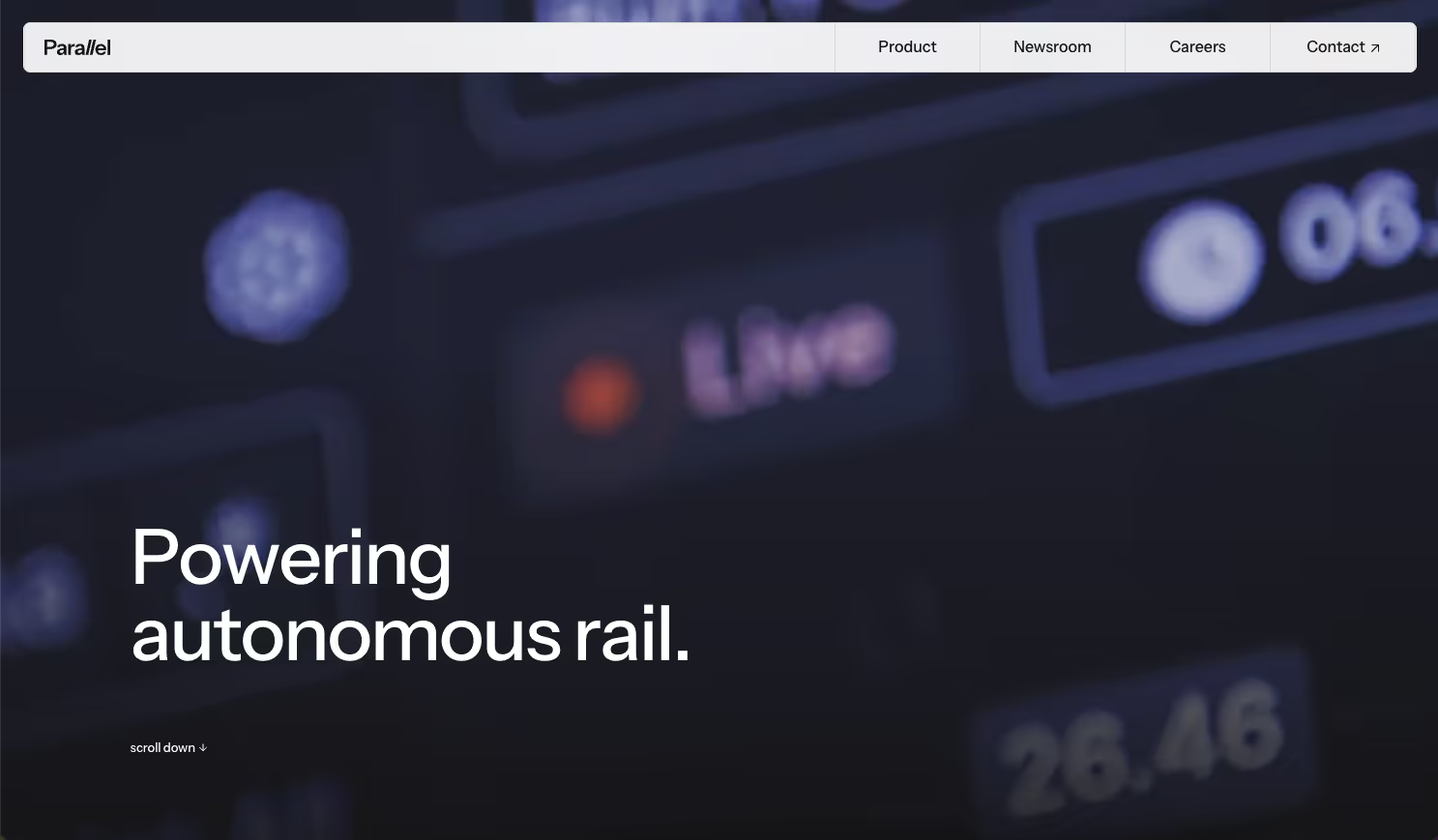
Parallel is shaping the future of freight logistics through the creation of autonomous, battery-electric rail vehicles that redefine how goods move across the country. Our vision is to unlock the full potential of railroads by enabling them to serve previously unreachable markets with unprecedented safety, efficiency, and environmental responsibility.
By integrating cutting-edge vehicle autonomy, advanced sensing, and platooning technologies into vehicles designed for seamless operation on existing rail networks, we are building a scalable alternative to traditional trucking that reduces pollution and optimizes supply chains. Parallel is not just innovating rail transportation; we are pioneering a new era of sustainable logistics that empowers railroads to expand their reach and impact.
Our mission transcends technology — we are forging a future where freight transportation is cleaner, smarter, and better connected, delivering economic and ecological benefits to industries and communities alike. Parallel is committed to driving meaningful change at the intersection of innovation and infrastructure, catalyzing a transformative shift in how goods are moved sustainably across the globe.
Our Review
We've been tracking Parallel Systems for a while now, and honestly, they're tackling one of those "why hasn't anyone done this yet?" problems. The freight industry desperately needs alternatives to trucking — it's expensive, polluting, and our highways are absolutely packed. But traditional rail? It's slow, inflexible, and requires massive infrastructure investments that most companies can't justify.
That's where Parallel gets clever. Instead of trying to reinvent the entire railroad system, they're building autonomous, battery-electric rail vehicles that work with existing tracks. Think of them as smart, independent train cars that can group together or split apart as needed.
The Tech That Caught Our Attention
What impressed us most is their platooning technology. These vehicles can literally self-sort and assemble into efficient formations while traveling — like a convoy of trucks, but on rails and fully automated. Each vehicle has its own drivetrain, brakes, and navigation system, so they're not dependent on a massive locomotive pulling them around.
The battery specs are pretty solid too: 500 miles of range from just one hour of charging. That's game-changing for short and medium-haul freight routes that currently rely heavily on trucking.
Real-World Progress
We're not just talking about prototypes here. Parallel got Federal Railroad Administration approval and launched their first commercial pilot in 2025 with Genesee & Wyoming in Georgia. They've already demonstrated fully automated platooning operations, and by September 2025, they'd moved into phase two of field testing.
That timeline feels realistic rather than overly ambitious — always a good sign in the startup world.
Who This Makes Sense For
Railroads looking to compete with trucking on shorter routes will love this. Currently, rail makes sense for long-haul, high-volume freight, but trucking dominates everything else because it's more flexible. Parallel's vehicles could help railroads grab market share in those shorter, lower-density routes without massive infrastructure overhauls.
With $49.6 million in funding (including a recent $38 million Series B), they seem well-positioned to scale this vision. We're curious to see how their Georgia pilot performs — it could be the proof of concept that transforms freight logistics.
Autonomous, battery-electric rail vehicles capable of hauling intermodal containers
Platooning technology for flexible vehicle self-sorting, assembly, and navigation
Advanced software platforms for motion control, navigation, real-time data sharing, and remote management
Regenerative and adaptive braking systems for safety and energy efficiency
Automated charging systems enabling up to 500 miles of range per hour of charging
FAQs
Member of Technical Staff, Infrastructure & Scaling








